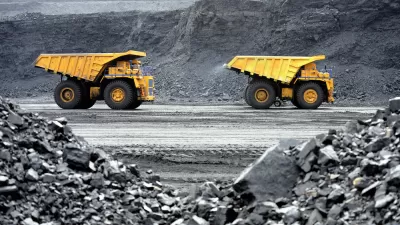In this Sunday Review editorial, The New York Times applauds China's announcement that it will ban coal burning in the Beijing region by 2020, but warns that some solutions to air pollution will exacerbate climate change.
China is by far the world's largest coal consumer. Last year it "consume(d) nearly as much coal as the rest of the world combined," reported NRDC's Alvin Lin in May, 2013. Thus, The New York Times editors were heartened to learn "that the government would ban the use of coal in Beijing and other urban areas by 2020 in an effort to reduce the noxious air pollution that chokes many cities." Not only will the prohibition be good for Beijing air breathers but for the warming planet as well.
"Motor vehicles, coal burning, industrial production and dust account for 31.1 percent, 22.4 percent, 18.1 percent and 14.3 percent of Beijing's PM 2.5 respectively. These airborne particles smaller than 2.5 microns in diameter are blamed for Beijing's smog," according to Xinhua.
However, the solution—burning more natural gas, has its own perils, warns The Times, because of a "particularly misguided plan (that) would involve building 50 large industrial facilities in western China to convert coal into synthetic natural gas." [Also see a description of the plan in a Quartz post here].
"It’s thus welcome news when President Xi Jinping says that reducing pollution will be a priority for his administration," they write. "But the process of converting coal to gas would increase the country’s total carbon emissions and consume huge amounts of water in what are already arid regions."
An alternative to synthetic natural gas should be shale gas, suggest the editors, as well renewable and nuclear power.
The country can also do more to tap into shale gas in a prudent way. By some estimates, China’s shale reserves could be nearly twice as big as American reserves. China will also need to invest more in renewable energy sources and nuclear power to meet the needs of its large and increasingly urban population.
FULL STORY: China Confronts Its Coal Problem

Planetizen Federal Action Tracker
A weekly monitor of how Trump’s orders and actions are impacting planners and planning in America.

Map: Where Senate Republicans Want to Sell Your Public Lands
For public land advocates, the Senate Republicans’ proposal to sell millions of acres of public land in the West is “the biggest fight of their careers.”

Restaurant Patios Were a Pandemic Win — Why Were They so Hard to Keep?
Social distancing requirements and changes in travel patterns prompted cities to pilot new uses for street and sidewalk space. Then it got complicated.

Platform Pilsner: Vancouver Transit Agency Releases... a Beer?
TransLink will receive a portion of every sale of the four-pack.

Toronto Weighs Cheaper Transit, Parking Hikes for Major Events
Special event rates would take effect during large festivals, sports games and concerts to ‘discourage driving, manage congestion and free up space for transit.”

Berlin to Consider Car-Free Zone Larger Than Manhattan
The area bound by the 22-mile Ringbahn would still allow 12 uses of a private automobile per year per person, and several other exemptions.
Urban Design for Planners 1: Software Tools
This six-course series explores essential urban design concepts using open source software and equips planners with the tools they need to participate fully in the urban design process.
Planning for Universal Design
Learn the tools for implementing Universal Design in planning regulations.
Heyer Gruel & Associates PA
JM Goldson LLC
Custer County Colorado
City of Camden Redevelopment Agency
City of Astoria
Transportation Research & Education Center (TREC) at Portland State University
Camden Redevelopment Agency
City of Claremont
Municipality of Princeton (NJ)




























